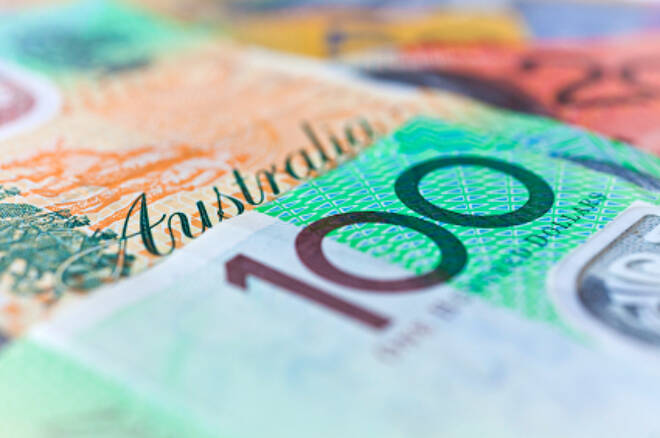Advertisement
Advertisement
Aussie Dollar Finishes Week Strong, Top Currency of the Year
By:
The Australian Dollar finished the week holding the honor of the strongest performing major currency of the year. On January 12, the currency reached a
The Australian Dollar finished the week holding the honor of the strongest performing major currency of the year. On January 12, the currency reached a high of .7518, its best level since the U.S. Federal Reserve raised interest rates on December 14.
For the week, the AUD/USD closed at .7498, up 0.0204 or +2.80%. For the year, the Forex pair is up 3.60%.
It wasn’t fresh economic data that helped underpin the currency. New data was scarce last week with only one major report.
The AIG Construction Index came in at 47.0, higher than the previous 46.6. Building Approvals surprised with a 7.0% gain. Investors were looking for 4.6%. It also showed that investors shrugged off the previous 11.8% decline. ANZ Job Advertisements also disappointed with a 1.9% loss compared to the previous 1.6% gain.
For the first time in four months, Australian Retail Sales missed economists’ expectations. According to the Australian Bureau of Statistics, retail sales rose 0.2% in November from a month earlier, compared with a 0.4% forecast. During the prior two months, retail sales were up 0.6% and 0.5% respectively.
The report slowed the annual pace of sales to 3.3%, down from the 3.5% level reported in October. It now stands at its weakest level since August last year. During that month, the Reserve Bank of Australia cut its benchmark interest rate.
The weaker U.S. Dollar, helped by falling U.S. Treasury yields and Trump-related volatility, was supportive for the Aussie. However, you can’t blame Trump for everything since the Australian Dollar is also up this year against the Euro, British Pound, Japanese Yen and the New Zealand Dollar.
New Zealand Dollar
The New Zealand Dollar also posted a strong gain against the U.S. Dollar last week. Although Trump did help weaken the Greenback last week when he failed to discuss the details of his plan to rebuild America, the best explanation of the strength in the Kiwi is that it was undervalued late last year as investors dumped the currency simply because of expectations of a series of Fed rate hikes in 2017.
The NZD/USD finished the week at .7125, up 0.0172 or +2.47%.
Traders are also saying the Kiwi sold off late last year in anticipation of major outflows from China. This would have pushed down China’s Yuan and damaged the New Zealand Dollar. That anticipated sell-off was priced into the market, and when it didn’t happen, investors covered their positions, resulting in an upward correction for the local currency this month.
Favorable iron ore and gold prices also contributed to gains in the Australian and New Zealand Dollars.
Japanese Yen
The U.S. Dollar lost ground against the Japanese Yen as investors reacted to lower U.S. Treasury yields and volatility in the equity markets. This led to position-squaring and profit-taking ahead of this week’s inauguration of Donald Trump as President of the United States.
The USD/JPY closed at 114.453, down 2.487 or -2.13%.
About the Author
James Hyerczykauthor
James is a Florida-based technical analyst, market researcher, educator and trader with 35+ years of experience. He is an expert in the area of patterns, price and time analysis as it applies to futures, Forex, and stocks.
Did you find this article useful?
Latest news and analysis
Advertisement
